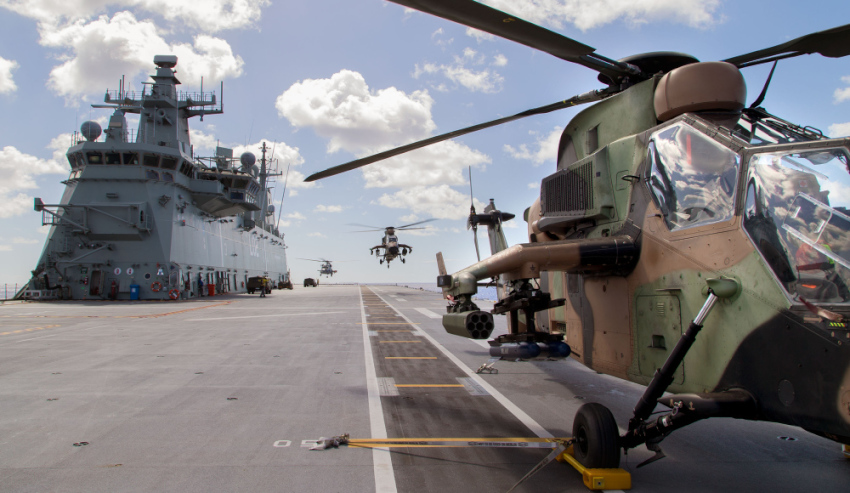The Canberra Class Amphibious Assault Ships, also known as Landing Helicopter Docks (LHDs), have been the focus of much examination the last few months, with questions about the vessels and relevant aircraft now being raised by Australian senators.
To continue reading the rest of this article, please log in.
Create free account to get unlimited news articles and more!
Chief of Navy Vice Admiral Tim Barrett, AO, CSC, copped the brunt of the questioning at Senate estimates, as the LHDs approach their third month being docked at Sydney's Garden Island, after problems were discovered with the vessels' propulsion systems.
At Senate estimates on Monday, it was confirmed by VADM Barrett that there had been a migration of oils across seals in the azimuth propulsion pod systems and that investigations were continuing to confirm whether this was a design problem or related to damage from excessive use.
Earlier this month, Minister for Defence Industry Christopher Pyne denied the issues had anything to do with oil, saying "one of them [the LHDs] was discovered to have a propulsion problem when it was out on manoeuvres and to check whether the other one had the same issues".
"That was looked at, it was found to have the same issues so both are being fixed in routine maintenance programs as is normally the case. It certainly had nothing to do with oil, I don’t know where that story came from," Minister Pyne said.
At Tuesday's estimates, the Chief of Navy delved into the issues with the aircraft used on the LHDs, along with the aircraft's capabilities and limits.
"There have been a number of incidents with aircraft MRH in our ships at sea, the aircraft itself does not have a rotor brake which means the blades slow by themselves when the engine's engaged and during that period there is always a chance that wind will affect the disc as the rotor slows," said VADM Barrett.
"We have had incidents ... where those blades have exceeded what we would normally consider to be relevant engineering limits."
The Vice Admiral said the relevant parties are looking to alleviate the problems with the aircraft through a number of ways.
"Procedurally, you can make sure you don't do it in certain wind strengths. Other things you look at from an engineering perspective would be the provision of a rotor break to slow it down more quickly and therefore you can control it," VADM Barrett said.
"The other way is physically to, there's a procedure whereby, when you start, you can start the engines and release the opportunity for the blades to release far more quickly so they spend less time in the period between where they're running at their full speed and when they're building up to that, which is where the blade sales its called, occurs.
When asked if what happened in one of the more recent incidents involving the Australian MRH90 Navy helicopter aboard HMAS Canberra, reported earlier this month on Defence Connect, VADM Barrett said "it's not normal".
The incident in question saw excessive updrafts of wind coming up the side of the ship during the helicopter shutdown process and caused the helicopter blades to act erratically, leading to unfavourable blade orientation.

 Login
Login







